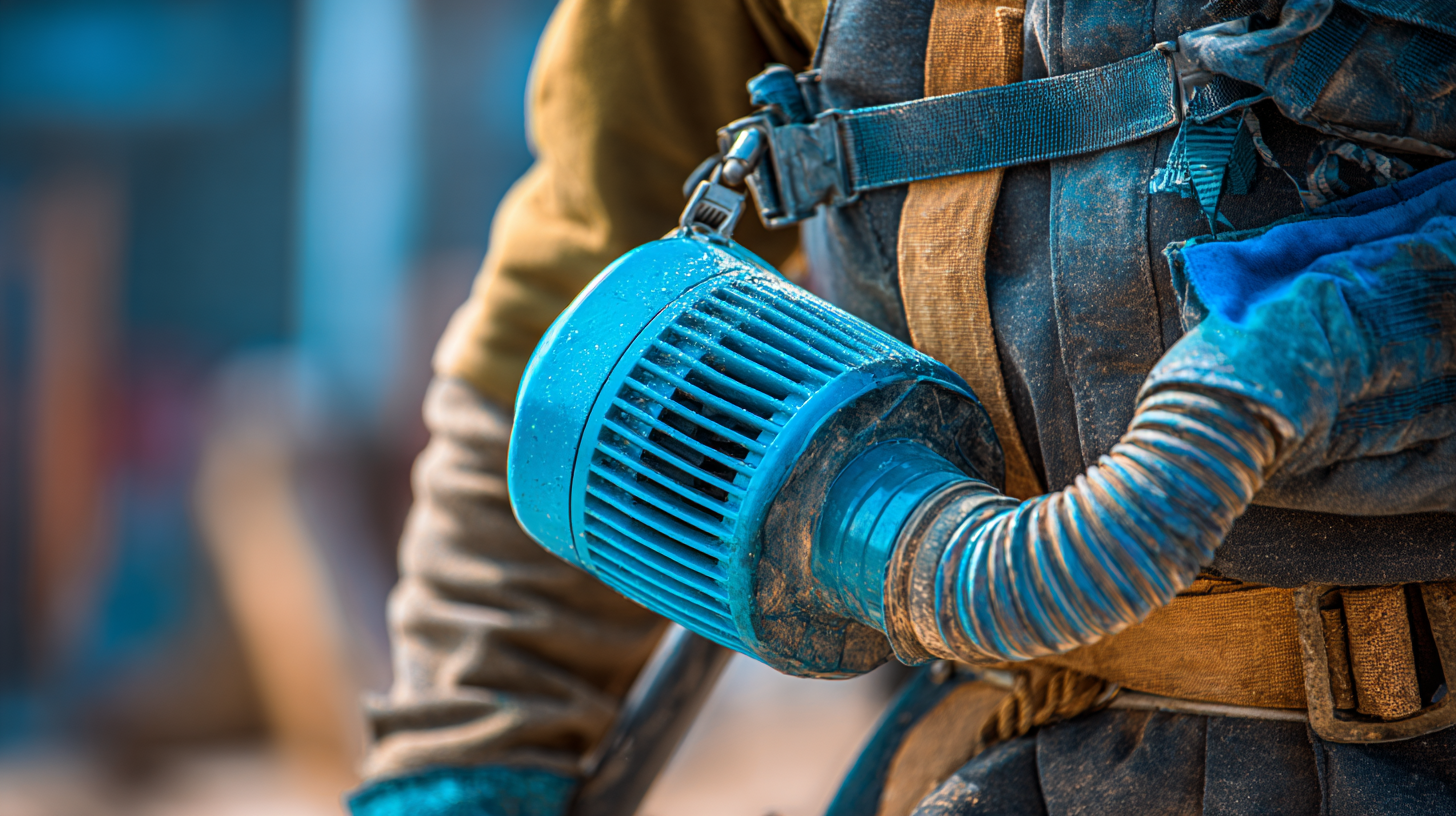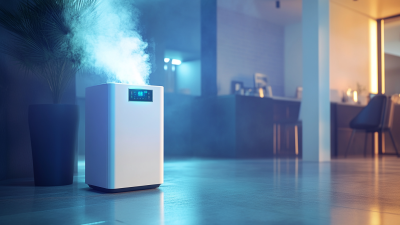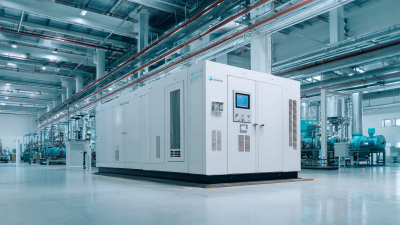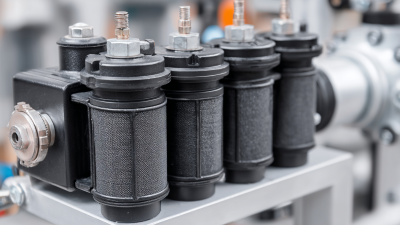
- sales@bjbod.com
- Mon - Sat at 7:00AM to 9:00PM

In the realm of modern cleaning technologies, Compressed Air Cleaners have emerged as a game-changer, revolutionizing traditional cleaning routines. According to the latest data from the Cleaning Industry Research Institute, the use of compressed air for cleaning can reduce labor time by up to 30% while improving efficiency and effectiveness. These powerful devices leverage high-pressure air to dislodge dust and debris from hard-to-reach areas, making them indispensable in environments ranging from industrial facilities to delicate electronics. Furthermore, a report by the Environmental Protection Agency highlights that switching to compressed air systems can result in a 50% decrease in chemical cleaning agents, promoting a more sustainable and eco-friendly approach to cleanliness. As the demand for effective and efficient cleaning solutions grows, embracing the technology of Compressed Air Cleaners is not just a trend but a necessity for staying competitive and environmentally responsible.

 Compressed air cleaners are innovative tools that utilize high-pressure air to effectively remove dirt, dust, and debris from various surfaces. Unlike traditional cleaning methods that often involve the use of water and chemicals, these cleaners harness the power of air to deliver a thorough and efficient cleaning experience. They work by directing bursts of compressed air to dislodge contaminants in hard-to-reach areas, making them particularly useful for electronic equipment, machinery, and delicate instruments where residue can accumulate.
Compressed air cleaners are innovative tools that utilize high-pressure air to effectively remove dirt, dust, and debris from various surfaces. Unlike traditional cleaning methods that often involve the use of water and chemicals, these cleaners harness the power of air to deliver a thorough and efficient cleaning experience. They work by directing bursts of compressed air to dislodge contaminants in hard-to-reach areas, making them particularly useful for electronic equipment, machinery, and delicate instruments where residue can accumulate.
The benefits of compressed air cleaners are significant. They not only reduce the need for chemical cleaners, contributing to a more environmentally friendly cleaning routine, but also minimize downtime in workplaces by allowing quick and efficient maintenance. Additionally, these devices are lightweight and portable, enabling users to easily maneuver them in various settings. The ability to clean without moisture also prevents the risk of rust or damage to sensitive components, making compressed air cleaners an essential addition to both professional and home cleaning arsenals.
Choosing the right compressed air cleaner for your needs requires careful consideration of several factors. First, evaluate the scale of your cleaning tasks. For large industrial spaces, a high-capacity unit with robust features may be necessary to handle extensive debris and ensure efficient operation. Conversely, for smaller workshops or home environments, a portable and lightweight model might be more suitable, allowing for easy maneuverability and less strain during use.
Next, assess the specific applications you will be using the compressed air cleaner for. Some models cater to specialized tasks like electronic equipment cleaning or automotive detailing, equipped with attachments and settings tailored for those purposes. Additionally, consider the noise level and energy consumption of the unit; quieter models can significantly enhance the working atmosphere, while energy-efficient options will help you manage operational costs.
By taking these factors into account, you can select a compressed air cleaner that not only meets your cleaning needs but also fits seamlessly into your routine and environment.
Compressed air cleaners are transforming traditional cleaning methods, providing an efficient and powerful solution for tackling dust and debris. To effectively utilize these cleaners, start by choosing the right nozzle for the task. For tight spaces, a narrow nozzle can focus the air pressure precisely, while a wider nozzle is ideal for larger surfaces. Before beginning, ensure the area is clear of any fragile items, as the force of compressed air can easily dislodge them.
As you proceed, hold the cleaner at a safe distance from surfaces to avoid damage. It's advisable to work systematically, directing the airflow at a consistent angle to dislodge dirt without creating a mess. Regular maintenance of the air cleaner, including checking for moisture and ensuring proper pressure levels, will enhance its performance. By following these steps, you can effectively incorporate compressed air cleaners into your routine, leading to a cleaner environment with minimal effort.

To ensure your compressed air cleaner operates efficiently and has a long lifespan, regular maintenance is essential. Start by routinely checking and replacing the air filters. Clogged or dirty filters can significantly reduce performance and lead to potential breakdowns. Depending on the usage frequency, inspecting these filters every month and cleaning or replacing them as necessary can prevent dust and debris buildup, ensuring optimal airflow and performance.
Another critical aspect of maintenance is monitoring the moisture levels in your compressed air system. Excess moisture can cause rust and damage internal components. Installing a moisture separator can help manage this issue effectively. Additionally, draining the air receiver tank regularly will eliminate any accumulated water, preventing corrosion and prolonging the life of your equipment. By implementing these maintenance tips, you will not only enhance the efficiency of your compressed air cleaner but also save costs on repairs and replacements down the line.
This chart illustrates the effectiveness of compressed air cleaners across various cleaning areas, showcasing their significant impact in maintaining cleanliness and efficiency in different environments.
Compressed air cleaners are transforming the way we approach cleanliness, extending their utility far beyond traditional applications. While they are excellent for dusting electronic devices, keyboards, and intricate machinery, their innovative uses are catching attention in various sectors. For instance, in automotive maintenance, compressed air is employed to blow out debris and dust from hard-to-reach areas in vehicles, ensuring a thorough clean that enhances performance and longevity.
Moreover, in the culinary world, chefs are discovering the advantages of compressed air cleaners for keeping food preparation areas uncontaminated. Rather than using cloths that might harbor bacteria, they can swiftly blow away crumbs and residues from surfaces and equipment, maintaining hygiene standards with ease. This versatility illustrates how compressed air technology is making cleaning routines not only more efficient but also safer and more effective across diverse applications.





